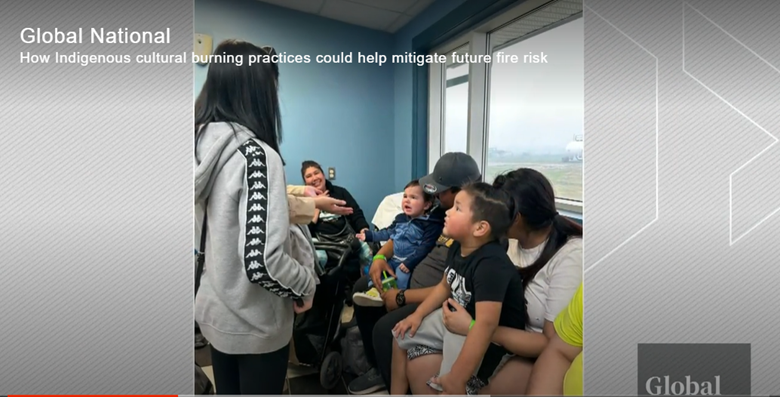While wildfire season and evacuation alerts have become par for the course for many communities across Canada, for Indigenous people its far too frequent.
“It’s a really disproportionate impact when Indigenous people only make up 5 per cent of the population in Canada but 42 per cent of wildfire evacuation events occur in their communities,” said Amy Cardinal Christianson, a Métis fire research scientist. “A lot of that is because of where Indigenous communities are located.”
Indigenous people across Canada are routinely dealing with wildfires and while traditional knowledge and cultural burning practices can help, jurisdictional issues and colonization contribute to create a different situation.
“There are already barriers that are at play because of colonization — there’s chronic underfunding of communities, the location of communities … access to clean drinking water,” said Christianson. “So when you add another compounding factor on like a wildfire evacuation or a wildfire it can be really devastating.”
According to the B.C. government, as of Aug. 25, 17 First Nations across the province are under either an evacuation alert or order.

Cultural burning
First Nations have a long history of cultural burning, but the practice was outlawed by B.C. in 1874 and later by other provinces in the early 1900s. Now, many First Nations say bringing back the practice more routinely will play a key role in protecting the land.
“Cultural burns comes from millennia of experience on the land and really being able to use fire on the landscape so that it can sustain your culture,” said Christianson. “It’s done around times of really like a low risk — like snow melt or snowfall.”
Often conflated with a prescribed burn which involves setting planned fires to maintain the health of a forest, cultural burns are different.
“(They) burn through the understory of vegetation and I’ve heard elders describe it as a fire you can walk beside,” said Christianson. “Because they’re able to control the fire on the landscape, you’re able to then manipulate it to achieve kind of what you want to get — like increasing the amount of berries or promoting certain plant growth, removing deadfall.
And while the process is done widely, its not a pan-Indigenous practice and each nation has different protocols and different uses for it.

Jurisdictional issues
While First Nations communities fall under federal jurisdiction, emergency management, forest management and fire management are all provincial. So when evacuation orders and alerts occur, so do extra levels of bureaucracy.
“Often times what happens is that the federal government has signed agreements with different provincial agencies to provide services during evacuations, but it can make it really complicated for a First Nation to have to figure those out,” said Christianson.
“And because of the chronic underfunding of First Nations, many don’t have a dedicated emergency manager or somebody that can spend a lot of time preparing.”





